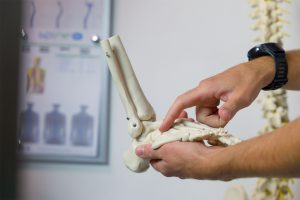
I am 40 years old. On June 21, 2019, I sprained my ankle. Since then, I’ve undergone Emet, Bowen, osteopathy, radiotherapy, and various forms of physiotherapy and kinesitherapy, but the swelling in my ankle has not subsided. I am unable to wear shoes, and walking is quite painful. An MRI revealed a tendon rupture and damaged ligaments. I have muscle dystonia. I know that without an examination, you can’t do much, but can you at least recommend some exercises or similar treatments?
If the MRI did not show cartilage damage, there must be a reason for the swelling (which is just a defensive, or protective mechanism). In your case, it is most likely ankle instability (ruptured ligaments, tendons, and dystonia combined). This means that while walking, the ankle and upper foot may be slightly “slipping,” and swelling is the body’s way of increasing pressure in the joint to reduce this “slipping.” If this hypothesis is correct, it explains why pain-relieving therapies (Emet, Bowen) were ineffective. It also explains why tension redistribution therapies (Osteopathy) didn’t help, and why treatments for local inflammation didn’t improve the situation (physiotherapy, radiofrequency therapy).
Additionally, I assume the exercises you’ve done were mainly focused on the foot and lower leg, which doesn’t have the potential to solve the issue in your case, as local muscle strength in the foot is not the problem here.
There are three possible solutions.
The first is to simply allow time to heal the problem. In a small number of patients, the body stabilizes the joint over time, either by changing the ankle’s anatomy, the movement patterns, or both. Surgical ankle stabilization (ligament reconstruction) is worth considering and discussing with an orthopedic surgeon. The third option is a complex exercise program aimed at re-stabilizing the ankle through the reactivation of the entire leg and torso because walking only ends with the foot but does not start with it. Our experience with this approach shows that persistent patients can achieve significant relief, and in many cases, complete elimination of symptoms.
